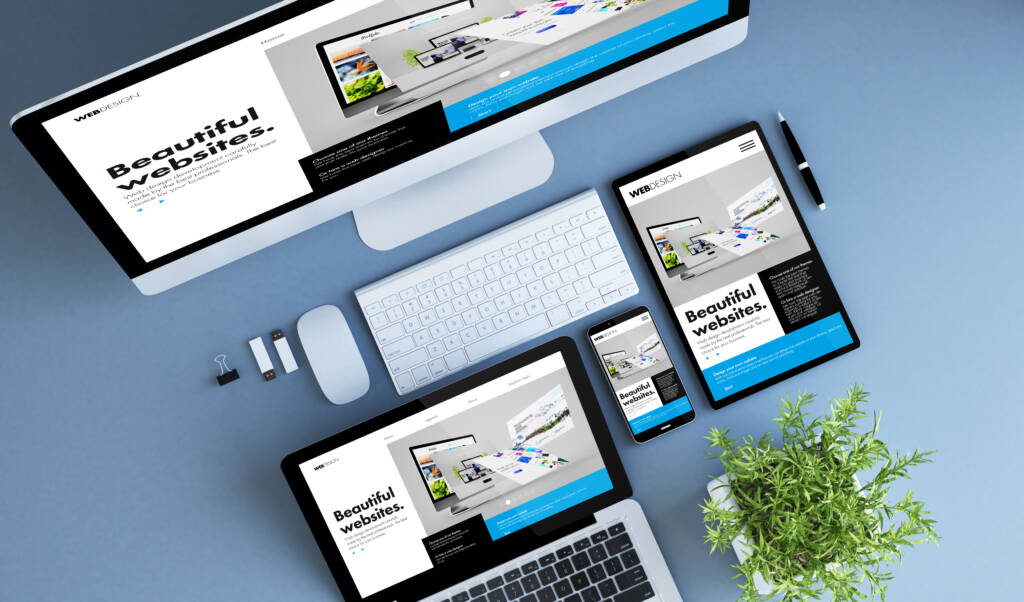In the fast-paced digital world, where user expectations are ever-evolving, delivering a seamless and exceptional user experience (UX) is paramount. At Tentackles, we believe that the foundation of any great digital product lies in a well-crafted design system. Let’s delve into what design systems are, why they are crucial, and how they serve as the backbone of exceptional user experiences.
What is a Design System?
A design system is a comprehensive set of guidelines, principles, components, and tools that ensure consistency and coherence across all aspects of a digital product. It includes everything from typography, color palettes, and iconography to interaction patterns and coding standards. Essentially, a design system acts as a single source of truth that guides the design and development of a product.
The Crucial Role of Design Systems in UX/UI Design
Consistency Across Platforms

One of the primary benefits of a design system is consistency. When users interact with a product, they expect a uniform experience across different devices and platforms. A design system ensures that the visual and functional elements are cohesive, creating a seamless experience whether the user is on a mobile app, a web application, or a desktop site.
Key Aspects of Consistency:
Visual Consistency: Ensuring that colors, fonts, and icons are uniform across all interfaces helps in reinforcing brand identity and makes the interface more predictable and easier to navigate.
Functional Consistency: Standardizing UI components such as buttons, forms, and navigation elements ensures that users can rely on familiar patterns, enhancing usability.
Interaction Consistency: Defining how users interact with the interface, including animations, transitions, and feedback, provides a coherent experience, reducing cognitive load and improving satisfaction.
Improved Efficiency and Collaboration

Design systems streamline the workflow for both designers and developers. With predefined components and guidelines, teams can work more efficiently, reducing the time spent on recreating elements from scratch. This efficiency fosters better collaboration between design and development teams, ensuring that everyone is on the same page.
Benefits of Efficiency and Collaboration
Reusable Components: By using standardized components, teams can avoid redundant work and focus on innovation and problem-solving.
Clear Documentation: Comprehensive guidelines and documentation make it easier for new team members to get up to speed, facilitating smoother onboarding and knowledge transfer.
Cross-Functional Alignment: A shared design language bridges the gap between designers and developers, fostering a collaborative environment where both teams can contribute to the product’s success.
Scalability and Flexibility
As products grow and evolve, maintaining a coherent design language can become challenging. A design system provides the scalability needed to expand a product’s features without compromising on user experience. It offers the flexibility to introduce new elements and patterns while ensuring they integrate seamlessly with the existing design.

Scalability and Flexibility in Action:
Modular Design: By creating modular components, a design system allows for easy updates and additions without affecting the overall consistency of the product.
Adaptability: Design systems can be adapted to accommodate new technologies and platforms, ensuring that the product remains relevant and competitive.
Future-Proofing: A well-structured design system can anticipate future needs and changes, making it easier to scale the product as the business grows.
Enhanced Accessibility
Design systems play a vital role in promoting accessibility. By adhering to accessibility guidelines and standards within the design system, we can ensure that our products are inclusive and usable for all users, including those with disabilities. This not only enhances the user experience but also aligns with legal and ethical standards, making the digital space more inclusive.
Promoting Accessibility Through Design Systems:
Consistent Use of ARIA (Accessible Rich Internet Applications) Standards: Ensuring that all interactive elements are properly labeled and navigable by screen readers.
Color Contrast and Legibility: Establishing color guidelines that meet accessibility standards for contrast, making text readable for users with visual impairments.
Keyboard Navigation: Defining interaction patterns that are fully navigable via keyboard, catering to users who cannot use a mouse.
Building an Effective Design System
Creating an effective design system requires a strategic approach. Here are some key steps to consider:
Define Core Principles
Start by establishing the core principles that will guide your design system. These principles should reflect your brand values and user experience goals. They will serve as the foundation for all design decisions.
Brand Identity: Reflecting the brand’s mission, vision, and values in the design principles.
User-Centered Design: Focusing on the needs and behaviors of the users to guide design decisions.
Simplicity and Clarity: Prioritizing ease of use and understanding in all design elements.
Create a Visual Language
Develop a visual language that includes color palettes, typography, iconography, and other design elements. This visual language should be versatile enough to be applied across various platforms and devices.
Elements of a Visual Language:
Color Palettes: Defining primary, secondary, and tertiary colors that reflect the brand identity and ensure readability and accessibility.
Typography: Selecting fonts and establishing a hierarchy to maintain consistency and readability.
Iconography: Creating or selecting icons that are clear, consistent, and recognizable across different contexts.
Develop Components and Patterns
Identify and create reusable components and design patterns. These should be modular and easily customizable to suit different contexts within the product. Ensure that these components are documented clearly, making them accessible to all team members.
Developing Components and Patterns:
UI Components: Standardizing buttons, forms, navigation bars, and other interface elements.
Design Patterns: Establishing patterns for common interactions, such as form validation, error messages, and loading states.
Responsive Design: Ensuring that components are adaptable to different screen sizes and devices.
Implement Governance and Maintenance
A design system is not a one-time project but an ongoing process. Implement governance to manage updates and changes to the system. Regularly review and refine components to ensure they remain relevant and effective.
Governance and Maintenance Strategies:
Version Control: Using version control to track changes and updates to the design system.
Feedback Loops: Establishing regular feedback sessions with users and team members to identify areas for improvement.
Continuous Improvement: Regularly updating the design system to incorporate new technologies, user feedback, and industry best practices.
Foster a Collaborative Culture
Encourage collaboration between designers, developers, and other stakeholders. A successful design system relies on continuous feedback and iteration. Foster a culture where team members feel empowered to contribute and improve the system.
Fostering Collaboration:
Workshops and Training: Conducting regular workshops and training sessions to keep the team aligned with the design system.
Open Communication Channels: Creating platforms for ongoing communication and collaboration, such as Slack channels or project management tools.
Celebrating Contributions: Recognizing and celebrating contributions from team members to encourage continuous participation and innovation.
At Tentackles, we understand that a well-implemented design system is the backbone of exceptional user experiences. It ensures consistency, enhances efficiency, promotes scalability, and fosters accessibility. By investing in a robust design system, businesses can create products that not only meet but exceed user expectations, driving long-term success and satisfaction.
Ready to elevate your user experience with a comprehensive design system? Get in touch with us at Tentackles, and let’s build something exceptional together.


